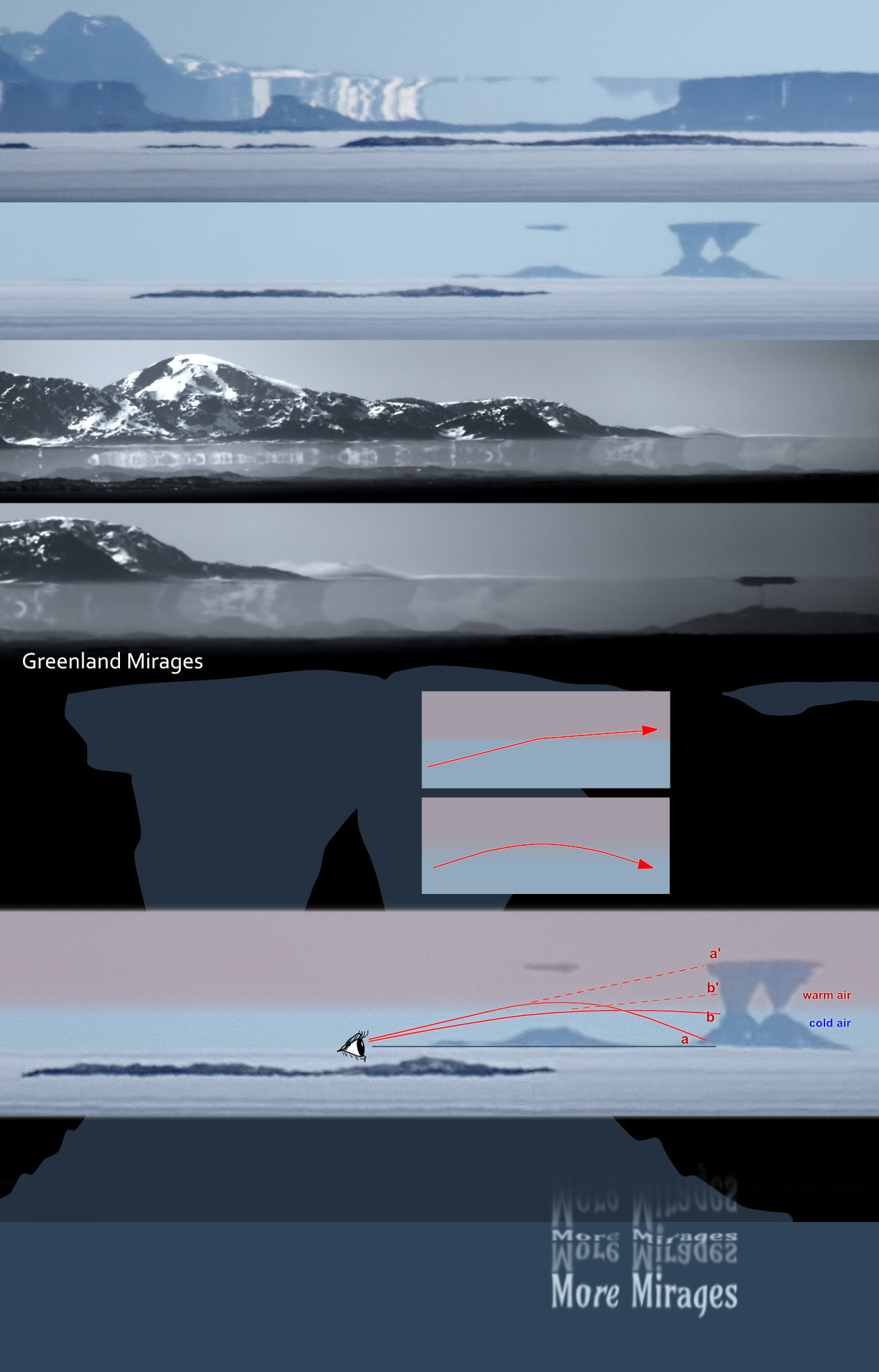toptics
A
Highlights
Sections of a large panorama of distant mountains and islands taken by Markus Wildi from Sissimuit on the western coast of Greenland. Markus identified the two miraged islands as 70km distant.
There is a horizontal air layer sometimes visible as a dark band. Within it are mirrored mountains. Reflected islands hang upside down. It is though a giant horizontal mirror stretches across the sky.
That is exactly what is happening. A junction between cold and warm air layers reflects light like a mirror. Other complex refraction effects could also be operating.
The lower colder air slid off the Greenland ice sheet only a few miles distant. Or the sea cooled it. The lower dark layer is not necessarily dirty, although it could be as the glacier tips are notoriously dusty.
The refraction process itself leads to greater light absorption in the lower layer.
Image ©Markus Wildi, shown with permission
Light passing from cold dense air into warmer less dense air ALWAYS deflects towards the cold air. Here the boundary is unnaturally sharp.
When the boundary is diffuse and the temperature difference is great enough, the ray is mirrored back into the cool air.
A superior mirage - called superior because the mirage image(s) are above the real object.
Ray "a" going upwards from the island's base is reflected back downwards at the cool-air interface. It appears to the eye to come from a'.
Ray b from the island's top is mostly through cool air and is only slightly deflected. It appears to come from b'.
An inverted mirror image is formed - apparently above the island.
Finding Mirages
Still air helps. Look during early morning or late afternoon when different temperature layers are likely to be steady
Scan along the horizon with binoculars (avoiding the sun!). Mirages usually extend less than a degree - a thumb width at arms length - above it.
Use a long focal length lens with preferably the camera on a tripod.
Try different heights above sea level. Mirages can change dramatically with height.


